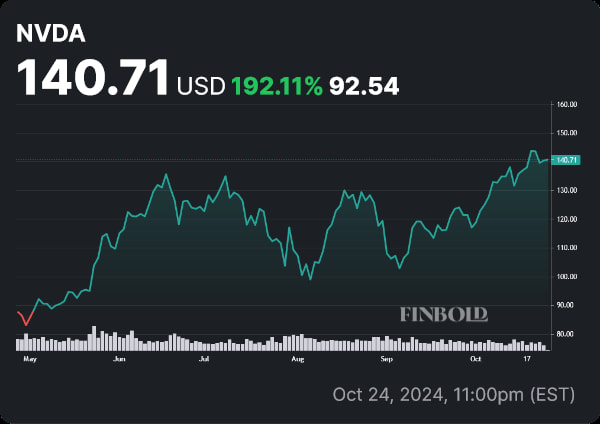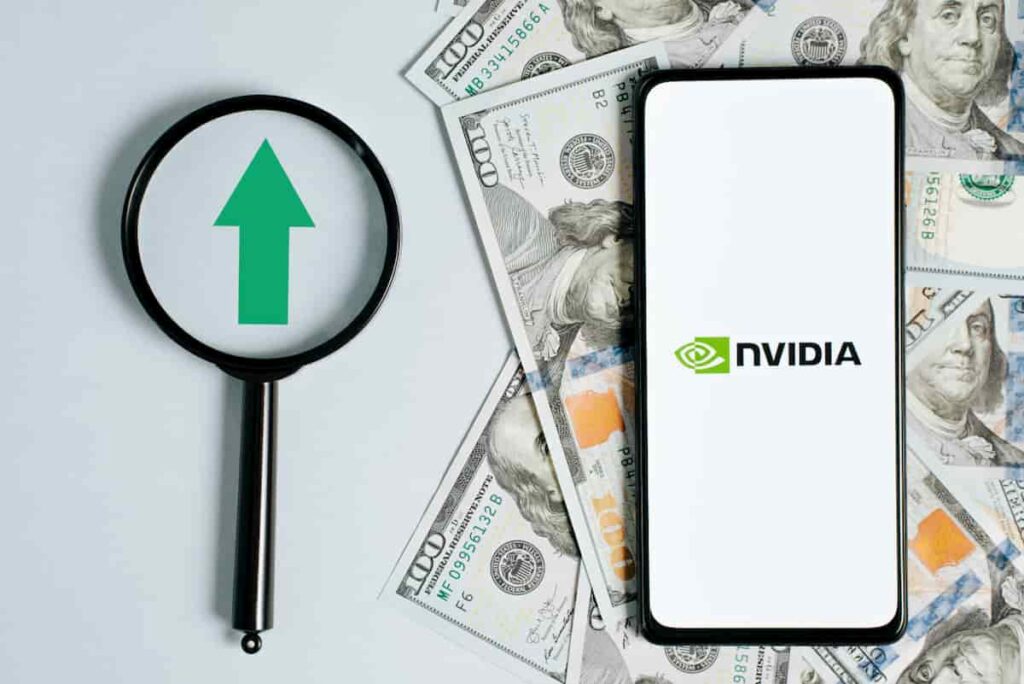Stock market valuations are at record highs — both in absolute terms and when compared to GDP through metrics like the Buffett indicator.
At present, the total market cap of the S&P 500 is some $45.84 trillion, and there are seven companies with a market cap of over $1 trillion.
There are only three, however, that have capitalizations over $3 trillion — Apple (NASDAQ: AAPL), Nvidia (NASDAQ: NVDA), and Microsoft (NASDAQ: MSFT). For now, the race to $4 trillion is the primary concern — but in the endless pursuit of growth, it’s only natural to speculate which of these titans will be the first to a $10 trillion market cap.
Of the three, one stock stands out — and it will come as no surprise that it is Nvidia. Many experts, like Wedbush managing director and equity researcher Dan Ives, predict that the semiconductor business will be the first to reach $4 trillion, as a frontrunner in the ‘fourth industrial revolution’ — and that it will continue to be the main beneficiary of the ongoing expansion of AI.
The rapid growth trajectory of NVDA stock price and market cap
At press time, Nvidia stock is trading at $140.71 — prices have surged by 60.33% over the last six months, bringing total year-to-date (YTD) returns to 192.11%.

While it’s all too easy to look at Apple and Microsoft as older, more established businesses (and they are), these companies have only breached the $1 trillion mark in terms of valuation relatively recently.
Here’s a quick rundown — MSFT reached $1 trillion on April 25, 2019, the second on June 22, 2021, and $3 trillion on January 24, 2024.
In Apple’s case, the first trillion was conquered on August 2, 2018, the second on August 19, 2020, and the $3 trillion mark was reached on January 3, 2022.
Now let’s compare to Nvidia — $1 trillion on May 30, 2023, $2 trillion on February 23, 2024, and $3 trillion on June 5, 2024.
There’s a stark difference in momentum — and although NVDA is at a risk of a pullback, one must concede that this rapid rise was made on the back of five consecutive quarters of triple-digit revenue growth.
Why Apple and Microsoft won’t beat Nvidia
The key difference lies in primary revenue drivers and growth potential.
Apple runs a mature software ecosystem and plays a major role in the smartphone market — Microsoft primarily derives value from enterprise software. There are impressive returns to be made there — but the growth potential cannot be compared to AI, which is still in its infancy.
The use cases of AI solutions are skyrocketing in number — whether it’s plain old automation, robotics, autonomous vehicles, advanced medical technology, customer service, shipping, or large language models — and NVDA is positioned to profit heavily from all of them. All of these markets have high growth potential.
Now, let’s contrast that to AAPL and MSFT — barring any revolutionary advancements or competing in AI with a quite steep late start, the growth prospects are simply incomparable. Enterprise software spending most likely won’t double — and neither will iPhone sales, but it might very well happen with AI.
Additional considerations
Lastly, it’s important to remember that while compelling, these are hypotheticals. Nvidia is, quite clearly, the frontrunner at the time of writing — but even with its continued momentum, more than tripling its market capitalization is a tall order.
All of this hinges on an AI revolution that would drastically change dozens of industries from the ground up — how exactly that would play out is something that’s beyond the ken of even the most capable analysts. Geopolitical shifts, recession, or a broader market crash owing to the most overvalued stock market ever seen could radically change the race to $10 trillion.
Still, Wall Street sees opportunity — Beth Kindig, a tech analyst at the I/O Fund, sees the company reaching a $10 trillion market cap by 2030. James Anderson, an early Amazon investor, is even more optimistic — projecting a $50 trillion market cap in the next decade. Others, like Vivek Arya of Bank of America (NYSE: BAC) are a tad more conservative — but still consider the stock undervalued and see significant upside.
On a more macro scale, PwC’s Global Artificial Intelligence Study estimates that by 2030, AI could contribute as much as $15.7 trillion to the global economy.
Once all is said and done, Nvidia is still the favorite in this race — even if growth moderates, it is the business that is best positioned to reach a $10 trillion market capitalization. Investors should keep an eye out for the company’s next earnings call, due November 20.








